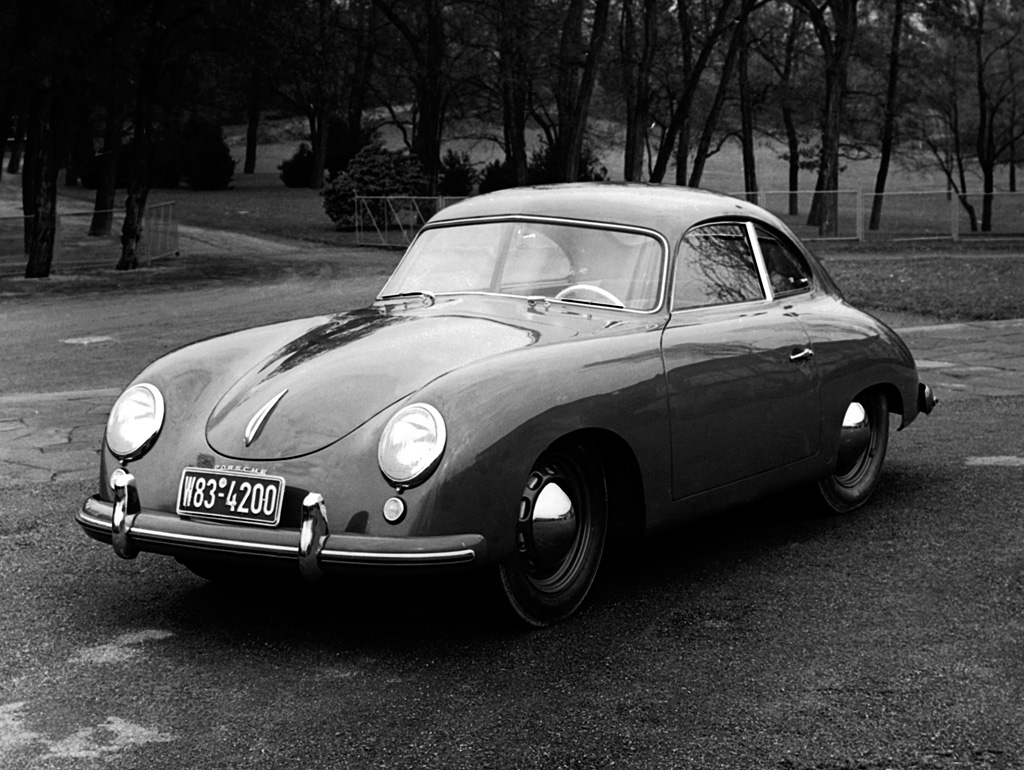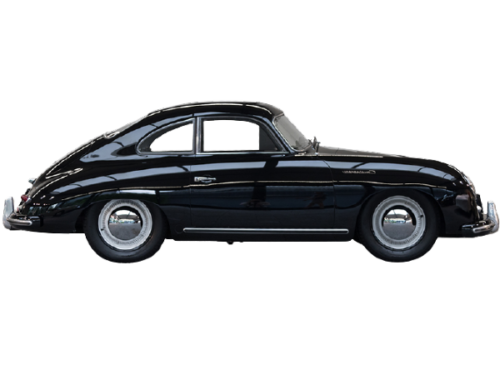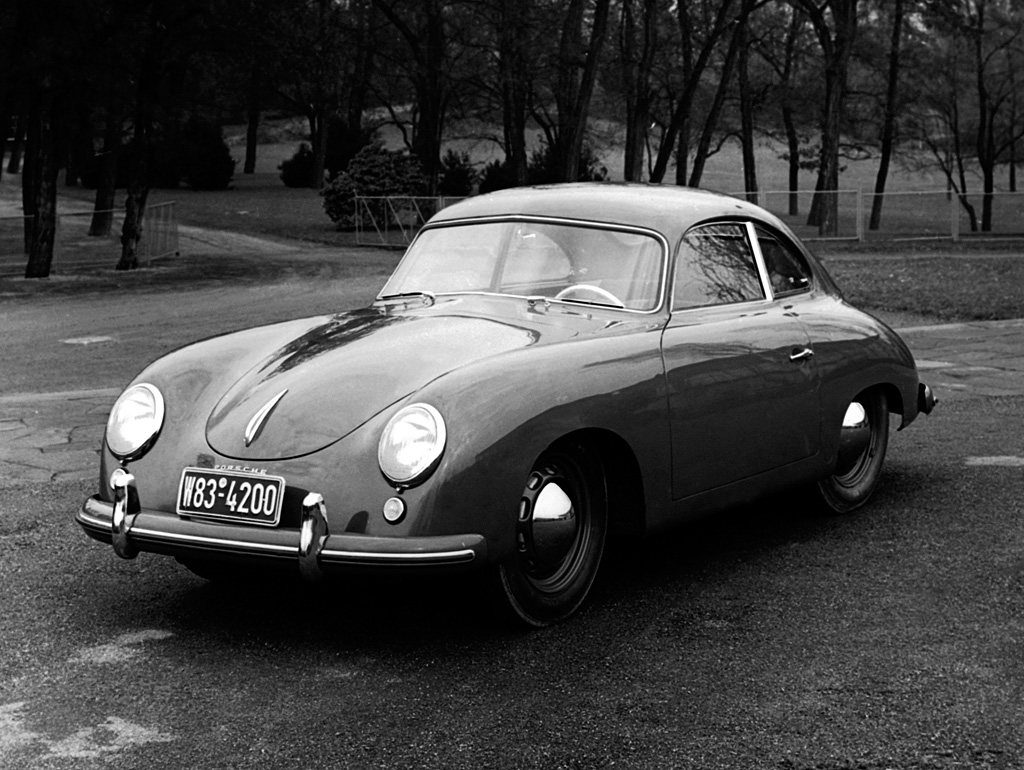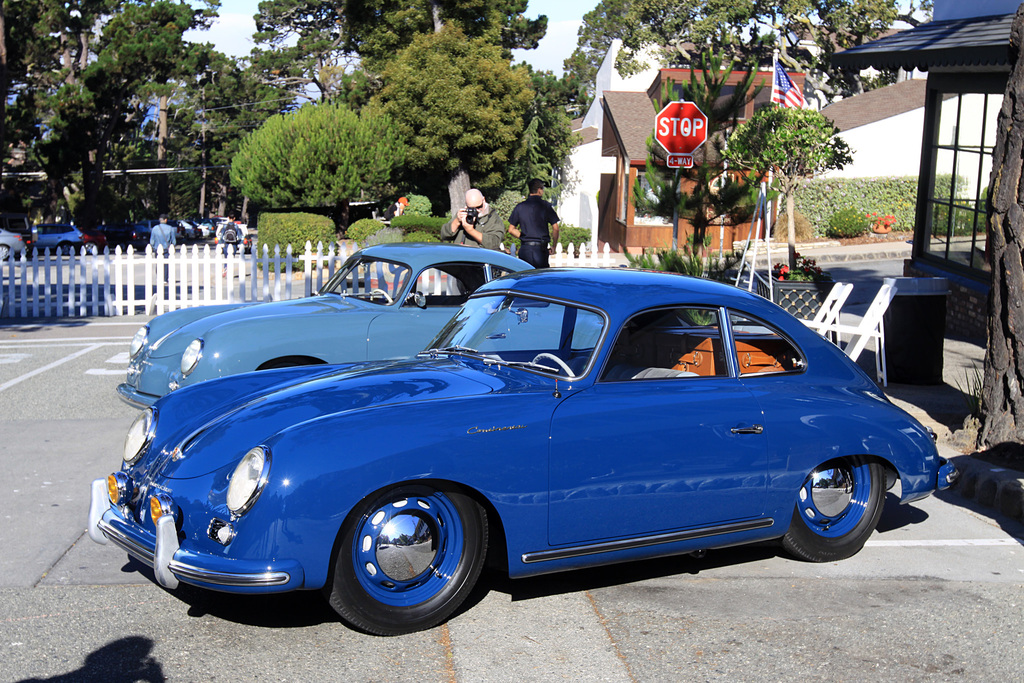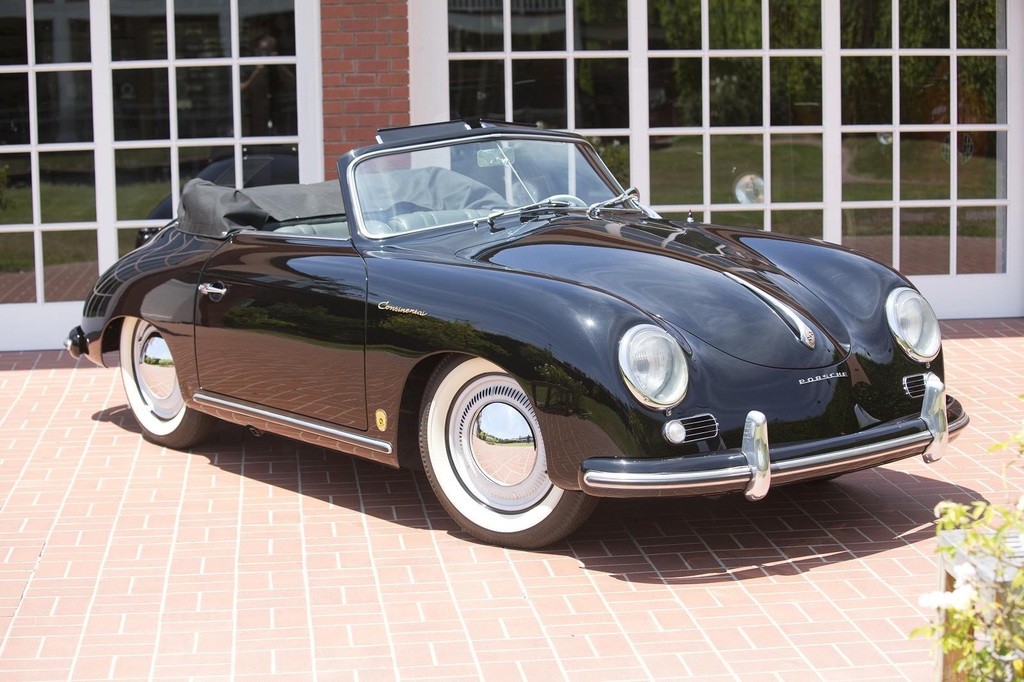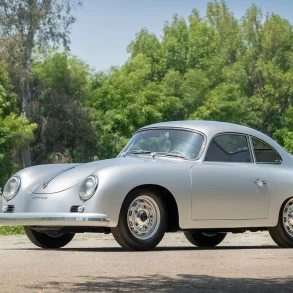1952 – 1955 Porsche 356/1500 “Pre-A” – The Ultimate Guide
The “Pre-A” designation was added later in Porsche history to distinguish the new cars introduced in October 1955 from earlier 356 coupes and cabriolets and the very first Speedster models built in 1954.
The Pre-A cars have unique styling traits, which differed noticeably from the 356A versions. One of the more distinguishing characteristics was the rear fender treatment, which had a wider, more graceful wheel arch, covering more of the tire.
Other production changes that occurred during Pre-A production, particularly in 1952, included redesigning the bumpers, which were originally integrated into the body until October 1952 (1953 models) after which bumpers were separate pieces mounted through the body. The first use of separate bumpers was on the America Roadster.
Other running changes included replacing the original split windshield with curved, one-piece glass beginning in March 1952, and dropping the temperamental 4-speed crash box for a new synchromesh transmission in 1953. The 1952 models were also among the first to come equipped with the more powerful 1500 motor.
The smaller VW-based 1100cc engines also remained available through the 1954 model year. The production 1500 Super with roller-bearing engine (Type 527) was officially announced in October 1951 and that model was good for 60bhp and 75 lb-ft.
Source: Supercarnostalgia
1952 – 1955 Porsche 356 ‘Pre-A’ Coupé & Cabriolet
In March of 1952 Porsche worked in conjunction with Reuter to simply production of the 356 and made several changes including a one-piece, bent windscreen and more significant bumpers which suited the American market. During the four year period, leading up to the 356A, the ‘Pre-A’ Coupé was constantly upgraded and included a synchromesh gearbox in 1953.
1952 cars also features ventilated disc wheels and optional trim rings that were common on export models. The car also got fully integrated front and rear aprons that extended below the bumpers. The bumpers themselves were enlarged with large guards and featured rubber strips. Small changes in the interior included a new 6000 rpm tach which replaced the clock, smaller gauge bezels, and relocated turn switch from the dashboard to the steering column.
The 1500 was Porsche’s newest engine which was quickly fitted with 40 PIBC Solex carburetors to produce 60 bhp @ 5000 rpm in 1952. These retained the Hirth roller-bearing crankshafts which gave Porsche enough clearance to enlarge their engine to 1500cc. Most cars from 1952 until the 356A of 1956 were powered by the 1500 engine but some left the factory with the smaller 1.1 and 1.3-liter engines.
At the time the Porsche was priced above the Jaguar XK120 and positioned itself as a sports-luxury model with reclining seats, Telefunken radio and an excellent level of trim by Karosserie Reuter. This increased cost was a primary reason why Max Hoffman convinced Porsche to make a stripped out Speedster for the American market.
By May of 1952 Porsche were also heavily invested in a race-ready version of the 1500 known as the Type 528. This used an entirely new crankshaft, increased valve lift from a Fuhrmann cam and a higher compression of 8.2:1. Capable of 70 bhp, the first versions were tried in aluminum Gmund coupes at the 1952 Mille Miglia. The unit was available in October of 1952 as the 1500S. At the same time Porsche announced the Normal Type 546 version which used plain bearings and smaller carburetors to reduce noise.
Changes for 1953 included an all-new synchromesh gearbox which departed from VW-sourced gears and allowed for an new set of ratios. Other detail differences of the 1953 model year included a new two-spoke steering wheel by VDM that carried the new company crest. The signal lights were also repositioned both front and rear.
1955 Porsche 356/1500 Continental Coupé & Cabriolet
At the request of American importer Max Hoffman, 356s for the 1955 model year were badged as Continentals before reaching American shores. As Lincoln protested the Continental name being used, the Porsche Continental was only produced in 1955 and thus represented the ultimate Pre-A 1500 before 356A production commenced.
The last of the original 356s were built in 1955, replaced by the heavily revised 356 A. Just as the new 1955 models were being developed, influential US importer Max Hoffman came to Porsche with another enticing marketing strategy. Believing that an evocative name would better resonate with the American market, Hoffman suggested that the latest Porsche 356s ought to be referred to as the “Continental.” As Hoffman only dealt with the high-end 1500 models, the Continental name was carried in script on the front fender of the last and most exclusive Pre-A 356s. Cars delivered elsewhere did not have the script.
Continental was the name chosen by Edsel Ford for Lincoln’s luxurious, custom-built 1940s coupes and cabriolets. In 1939, when the first prototype was built, Edsel felt that Continental emphasized the Lincoln’s sporty European-inspired styling. The cars were an immediate success but being virtually hand built made them a costly and exclusive model for Ford’s luxury car division. In the post World War II era the Lincoln Continental coupes and cabriolets were reprised from 1946 through 1948, (the ’46 Continental was also the Official Pace Car for the first postwar running of the Indianapolis 500) and the name was resurrected in 1956-57 for the Mk II. Continental has remained a Lincoln trademark ever since.
Unfortunately for Porsche, because Ford Motor Company claimed the rights to the “Continental” name and threatened legal action, so Porsche stopped using that script at the end of the 1955 model year and changed the script to “European” for the 1956 model year. It was a one-year only (October 1954 through October 1955) moniker for the 356 Porsches.


